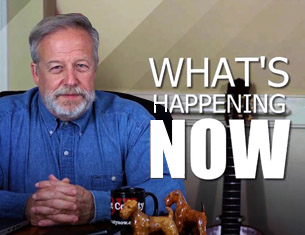REAL News for REAL People
The Hunter

The Hunter seeks that Last Sinew of Truth
In the heart of all real men there is compassion for all things true. Some find it, some never do, but real men never stop searching.
 Some true men, like Martin David, played by Willem Dafoe, find it without even knowing that they are on the path of that true knowledge, but, on rare occasions, they find it nonetheless.
Some true men, like Martin David, played by Willem Dafoe, find it without even knowing that they are on the path of that true knowledge, but, on rare occasions, they find it nonetheless.
That path of truth is profound, and often, for men like Martin David, is wrapped in a healthy cloak of redemption. This small, indie film, "The Hunter," plays out to be more than the quest of a stealthy hunter seeking his prey, it actually becomes the quest for this man's functioning soul. And in that pursuit, the quest, moreover, becomes a survival of the better nature of one man versus the parallel quest of another, and the eventual discovery that the true prey was the busted spirit within himself; its interminable need to be fixed.
Martin David's initial quest for prey was the rare, and thought to be extinct, Tasmanian Tiger, which is actually a wild canine with stripes, reminiscent of a Bengal Tiger, running down his lower back. The rare beast is given part of its unique moniker because of its supposed indigenous proximity to the mountains of Tasmania, the island and state of the continent country of Australia.
The animal's defined value was not based on capturing the creature to preserve it until a mate could be found, but to kill it and harvest its tissue for: research, cloning, and the recreation of its legendary toxic venom - extremely rare in mammals.


Martin David was hired by the Red Leaf Corporation, a micro-biology entity, to pose as a zoologist, and hunt the rare creature to take its essence of life to be harvested for corporate profit. This profitable premise actually works in today's scientific wonderment that abounds currently: Take something rare and valuable, stop its existence, and control its recreation (cloning) for profit. It was Martin David's job to fulfill that profitable promise. But that was before Martin met the Armstrong family.


The Armstrong family was most unusual in every conceivable manner possible, and it was Martin's charge to live with them as a base point from which to seek the Tasmanian Tiger; however, that may have been what was best for the hunter of this pre-extinct species. He accepted the responsibility for others. And while their relationship, in total, was bizarre: A highly educated mother, Lucy Armstrong, played by Frances O'Connor, is addicted to barbiturates, sleeping and out of the way of life, while the pre-adolescent daughter, Sass, played by Morgana Davies, swears like an Australian sailor, and the younger son, Bike, played by Finn Woodlock, is mute in speech, but vast in useful knowledge.
The knowledge supplied by the mute boy encourages the hunter to the completion of his task, but a task not altogether of ones' anticipated conclusion. Journeyman Actor Dafoe can expose the many layers of depth of his characters as well as any actor living, and this is his film from start to finish, as he appears in almost every scene.
In this film's 100 minutes of run-time, Director Daniel Nettheim uses the Alice Addison screenplay of the Wain Fimeri original adaptation of the Julia Leigh novel to craft a pretty good small film, with an important message for some folks, others may not get it, but that's O'kay. Films are not built to be perfect for everyone; however, it surely is nice when one tells such a fine story.
Rated R, Released in theaters April 6, 2012.






















